|
Ultra Micro Nikkor Technology
|
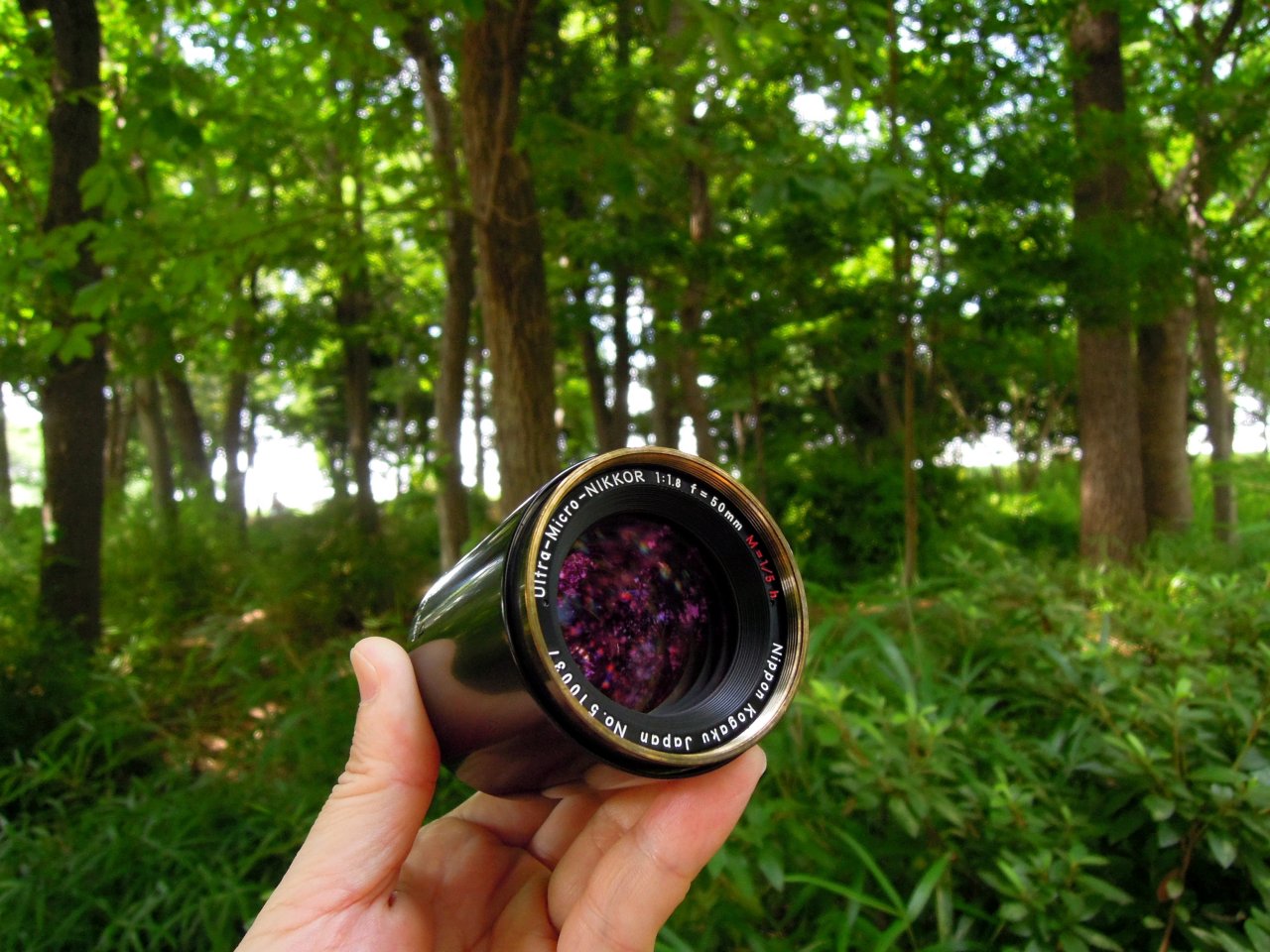
Ultra Micro Nikkor Technology
Endless Evolution - From Micro to Super Micro photography
As I wrote briefly in the chapter Grand History,
the Nippon Kogaku's purpose to make the Ultra-Micro-Nikkor 105mm F2.8
was making the evaporation mask for frequency transistors.
Once Nippon Kogaku finished this project,
they developed more detailed photomask manufactures
that is super micro photographs.
A line width of those days was 1 - 3 micrometers.
I want to summarize the technology of Ultra-Micro-Nikkor briefly.
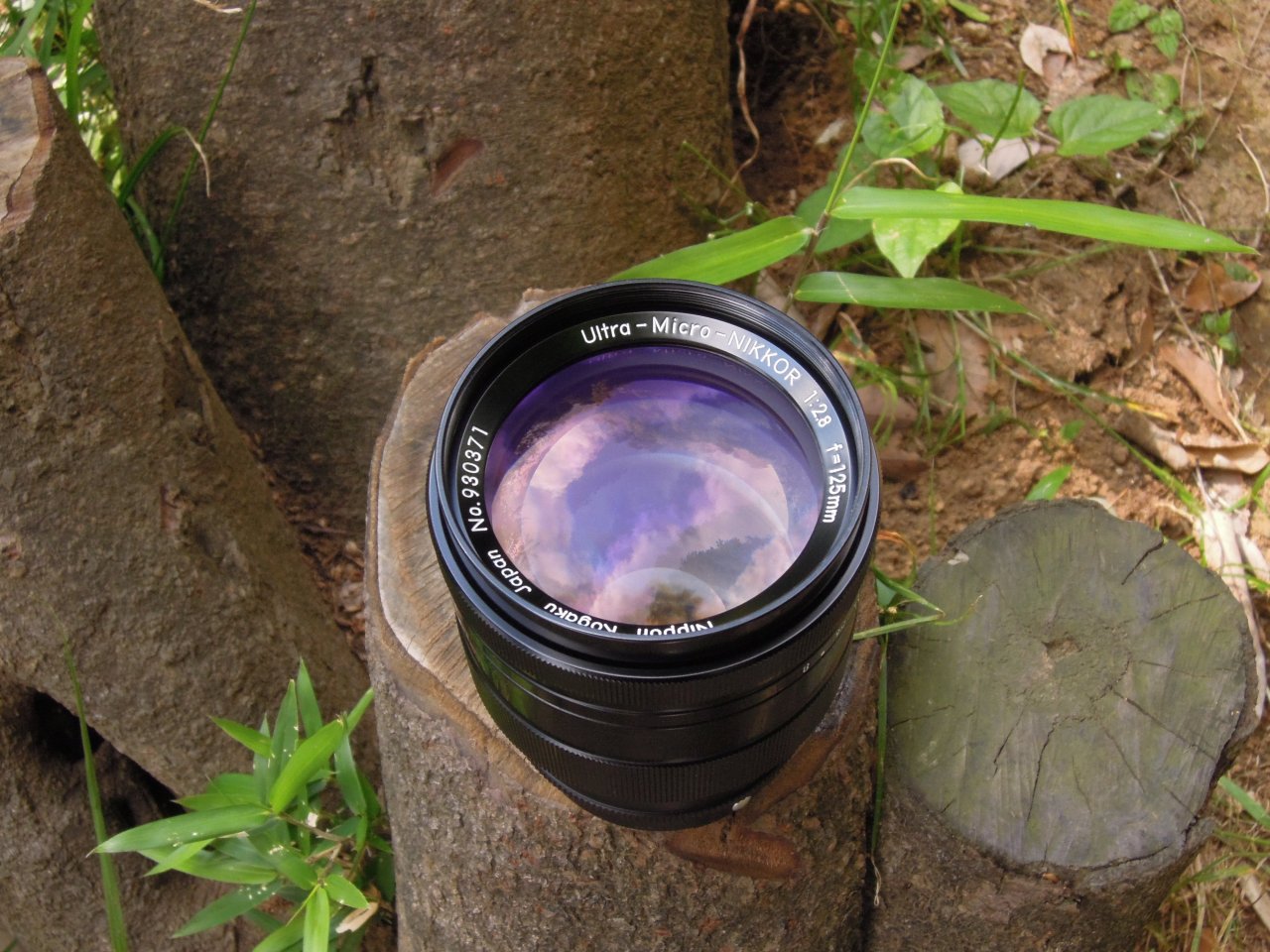
Ultra-Micro-Nikkor 125mm F2.8
Aperture and Resolution of Lens
What is the common knowledge for shutterbugs? Yes, we know the answer.
If we stop down the aperture, the image will become sharp.
This is the standard.
Therefore, we might think when we can make the high-resolution lens
even we sacrifice aperture.
However, it is not accepted at this lens requirement.
If you stop down the high-resolution lens aperture,
the resolution will be significantly reduced.
In addition, the high-resolution lens needs to be fast aperture.
As you can see the following lens equation,
the only few lens of excellent less optical aberration
can make the photographic subject with the wavelength of L nm.
The Fe means available F (aperture) number of the lens.
The resolution of center of the lens can be defined
by using the following equation.
Resolution = 1 / 1.22 L Fe (lines/mm)
If object is at infinity, Fe and F are agree,
however if object is at close range and the case of M-power magnification,
it becomes the following formula.
Fe = F (1+M)
The Relationship between Wavelength of Light and Resolving Power (lines/mm)
As I described previous chapter,
we can calculate the availability of F (aperture) number.
You probably understand when we need the high-resolution,
we need the fast lens.
In addition, if the lens has same F number,
the lens gets more resolution when the wavelength of light is shorter.
Note: The following numbers in column show resolution (lines/mm)
|
F No.
|
e-line
L = 546.1 nm
|
g-line
L = 435.8 nm
|
h-line
L = 404.7 nm
|
1.0
1.2
1.4
2
2.8
4
5.6
8
11
16
22
|
1,501
1,251
1,072
750
536
375
268
188
136
94
68
|
1,881
1,567
1,343
940
672
470
336
235
171
118
85
|
2,025
1,688
1,447
1,013
723
506
362
253
184
127
92
|
Reference : Nippon Kogaku, LENS DATA 1971, 1 UM-2-1
e-Line and g-Line
It is not only an advantage although we can see shorter wavelength
can make high-resolution.
The high-resolution film development by using color chemical processing
had a fault which shorter wavelength was grainy.
The shorter wavelength blurs the images.
Therefore, the engineer thought it was possible to use
photo resist (photosensitive resin).
At the Nikon catalog, you can see the two versions of Ultra-Micro-Nikkor.
One of them is for g-lines, and another is for e-lines.
So you have to understand the difference of those issues
when you see the Ultra-Micro-Nikkor brochure.
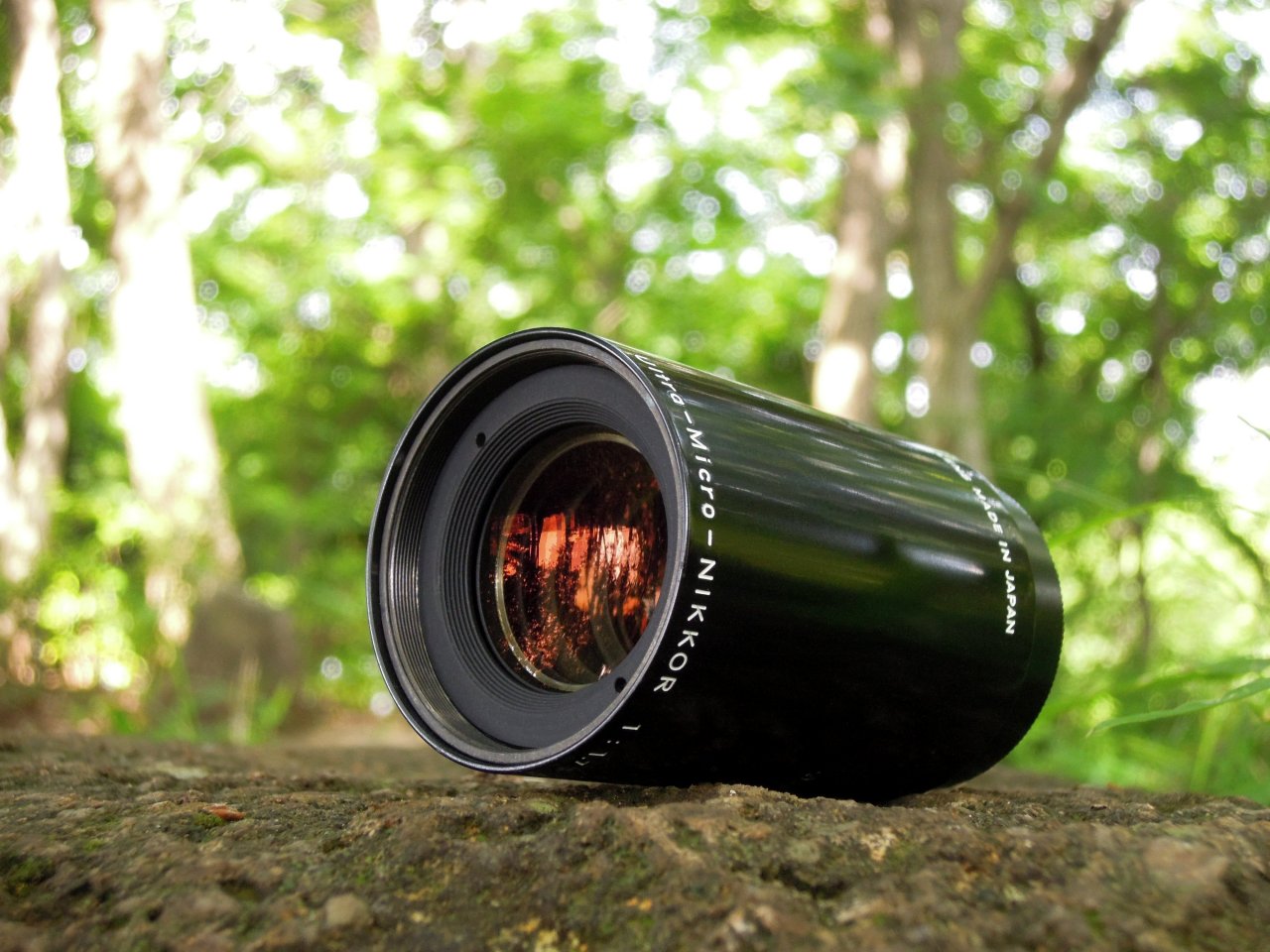
Ultra-Micro-Nikkor 28mm F1.7e, Collector's Dream Rare Lens
Varieties
The following list are made in year 1971 which Nippon Kogaku
defines clearly e-line and g-line.
For a personal hobby, I recommend to own the Ultra-Micro-Nikkor for e-line,
because of the color develop chemical.
However, when you use a digital SLR camera, whatever kind of lenses are chosen, it's no problem.
Resolving Power of Ultra-Micro-Nikkor for e-line
|
Lens Name
|
Standard magnification
|
Image area
|
Aerial resolving power
|
28mm F1.7e
|
1/10X
|
8 mm⌀
6 mm⌀
|
700 lines/mm
800 lines/mm
|
28mm F1.8e
|
1/10X
|
8 mm⌀
7 mm⌀
6 mm⌀
|
600 lines/mm
650 lines/mm
700 lines/mm
|
30mm F1.2
|
1/25X
|
2 mm⌀
|
1,260 lines/mm
|
50mm F1.8e
|
1/5X
|
14 mm⌀
12 mm⌀
|
500 lines/mm
600 lines/mm
|
55mm F2
|
1/4X
|
12 mm⌀
|
500 lines/mm
|
125mm F2.8
|
1/25X
|
28 mm⌀
|
400 lines/mm
|
135mm F4
|
1/25X
|
50 mm⌀ (at F4)
64 mm⌀ (at F5.6)
|
330 lines/mm
200 lines/mm
|
155mm F4
|
1/10X
|
56 mm⌀ (at F4)
80 mm⌀ (at F5.6)
|
300 lines/mm
200 lines/mm
|
165mm F4
|
1/40X
|
56 mm⌀ (at F4)
80 mm⌀ (at F5.6)
|
300 lines/mm
200 lines/mm
|
250mm F4
|
1/20X
|
80 mm⌀ (at F4)
100 mm⌀ (at F5.6)
110 mm⌀ (at F5.6)
|
320 lines/mm
220 lines/mm
180 lines/mm
|
Resolving Power of Ultra-Micro-Nikkor for g-line and h-line
|
Lens Name
|
Standard magnification
|
Image area
|
Aerial resolving power
|
28mm F1.7g
|
1/10X
|
8 mm⌀
6 mm⌀
|
800 lines/mm
900 lines/mm
|
28mm F1.8h
|
1/10X
|
8 mm⌀
7 mm⌀
6 mm⌀
|
750 lines/mm
800 lines/mm
900 lines/mm
|
30mm F1.2h
|
1/25X
|
3 mm⌀
2 mm⌀
|
1,300 lines/mm
1,600 lines/mm
|
50mm F1.8h
|
1/5X
|
14 mm⌀
10 mm⌀
|
650 lines/mm
800 lines/mm
|
225mm F1.0g
|
1X
|
50 mm⌀
|
400 lines/mm
|
300mm F1.4g
|
1X
|
60 mm⌀
|
400 lines/mm
|
Reference : Nippon Kogaku, LENS DATA 1971, 1 UM-1
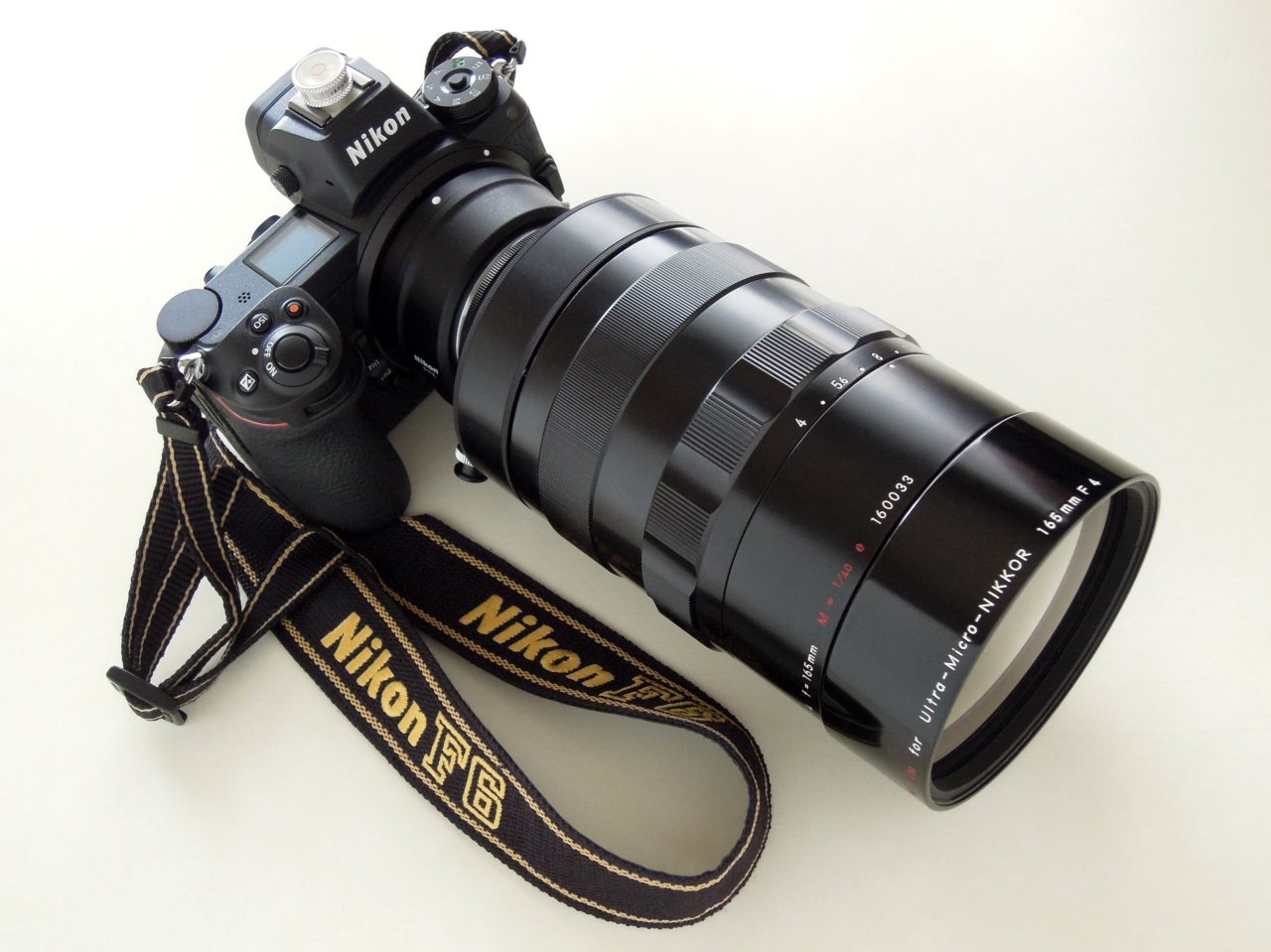
Nikon Z 6 with Ultra-Micro-Nikkor 165mm F4
Super High End Lens Ultra-Micro-Nikkor
Ultra-Micro-Nikkor lens has the characteristic near an ideal lens.
It is not necessary to know the numerical characteristic.
Ultra-Micro-Nikkor was once a famous super star, great renown is important,
however those survided old lens needs something fun to live.
Ultra-Micro-Nikkor worked very hard in the industry.
We have to say "much appreciated" to those lenses.
As we know, Japanese samurai sword was made to kill somebody.
However, in those days, the role does not exist now.
It just exist as an art. We can feel the Japanese spirit from those swords.
Also, Ultra-Micro-Nikkor can say the same thing.
No one sets this lens to old printing machine again.
It is better to use this lens in the Japanese four seasons.
This lens may have a healing power.
The real thing live beyond the years of life on the earth.
This picture as shown is Ultra-Micro-Nikkor 55mm F2.
Even it has over 500 lines/mm resolution, the overview is so cute.
The picture was taken at the Japanese rice fields in early summer.
The Ultra-Micro-Nikkor lens multi coat comes out the grove of the village shrine in Japan.
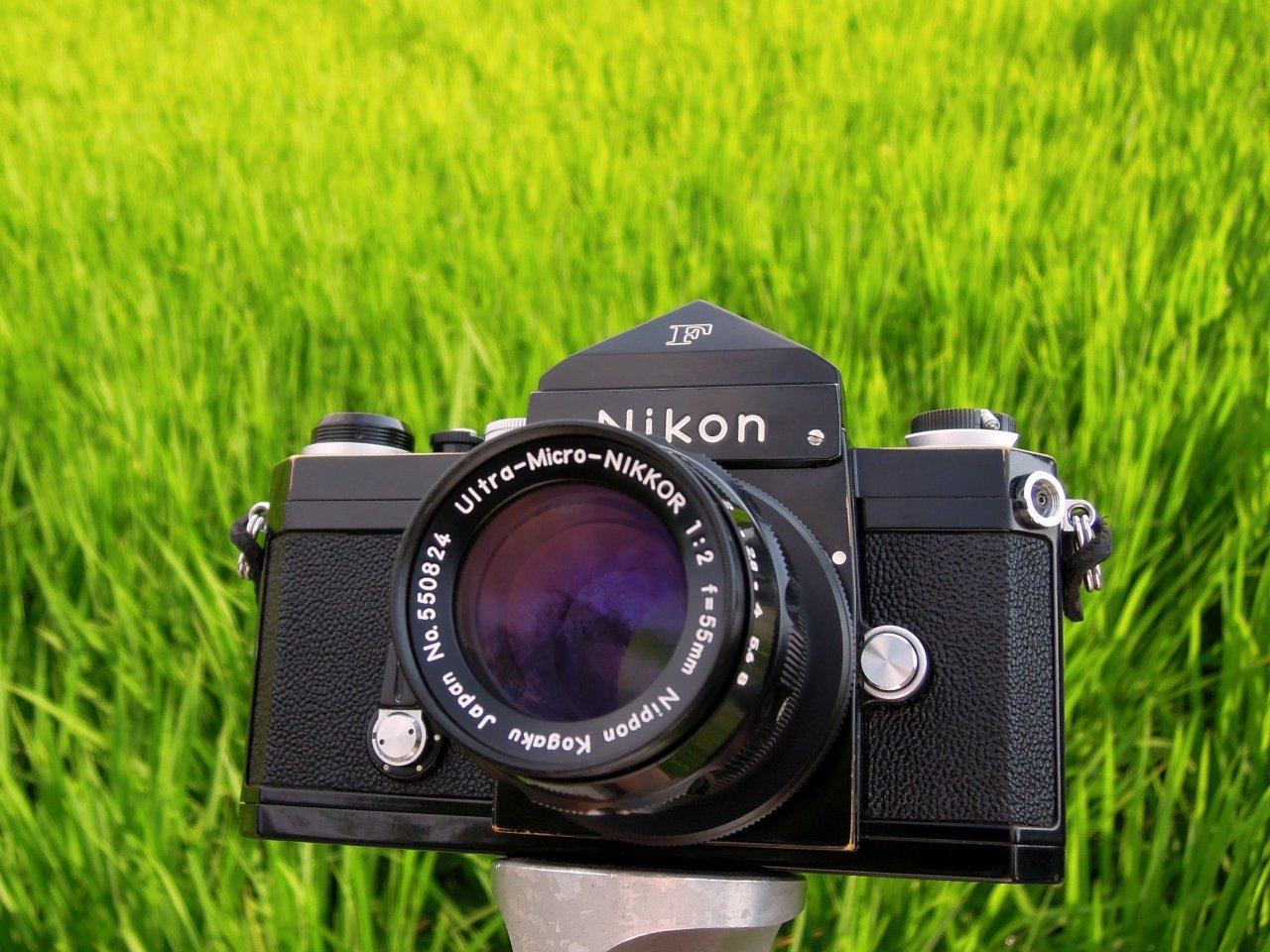
Ultra-Micro-Nikkor 55mm F2, in Japanese Early Summer Time
Back to RED BOOK NIKKOR
Copyright Michio Akiyama, Tokyo Japan 2001, 2021
| 



